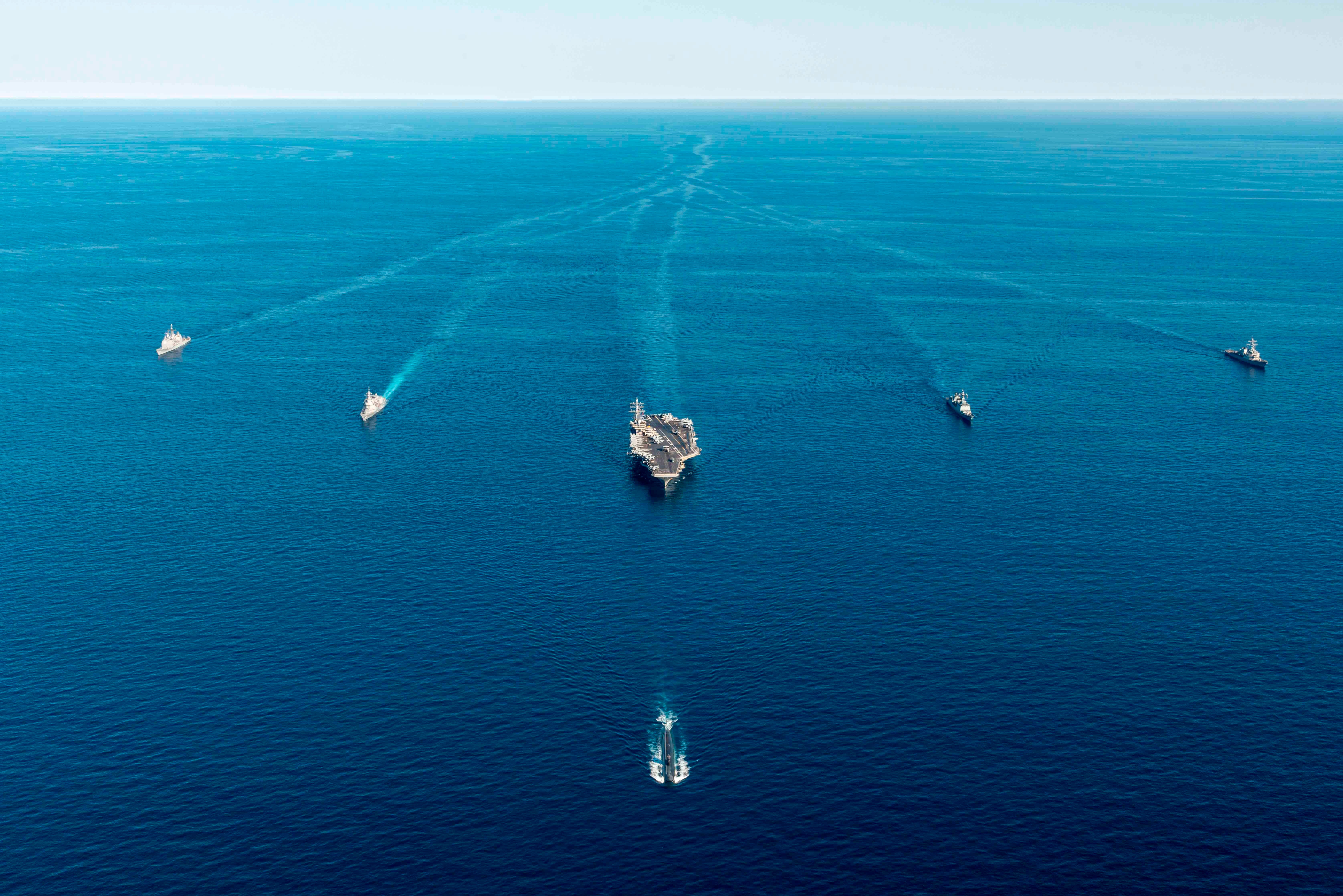North Korea launches two ballistic missiles towards sea after US drills
Launch is latest in country’s barrage of weapons tests
Your support helps us to tell the story
From reproductive rights to climate change to Big Tech, The Independent is on the ground when the story is developing. Whether it's investigating the financials of Elon Musk's pro-Trump PAC or producing our latest documentary, 'The A Word', which shines a light on the American women fighting for reproductive rights, we know how important it is to parse out the facts from the messaging.
At such a critical moment in US history, we need reporters on the ground. Your donation allows us to keep sending journalists to speak to both sides of the story.
The Independent is trusted by Americans across the entire political spectrum. And unlike many other quality news outlets, we choose not to lock Americans out of our reporting and analysis with paywalls. We believe quality journalism should be available to everyone, paid for by those who can afford it.
Your support makes all the difference.North Korea fired two short-range ballistic missiles towards its eastern waters, a day after asserting its rights to “self-defence” while warning against the redeployment of a nuclear-powered US aircraft carrier near the Korean Peninsula.
It was Pyongyang’s seventh such test launch in two weeks, which added to concerns harboured by the US and its regional allies, South Korea and Japan.
South Korea’s joint chief of staff in a statement said it detected two missile launches on Sunday between 1.48am and 1.58am local time from the North’s eastern coastal city of Munchon.
Japanese vice defence minister Toshiro Ino also confirmed the launches, saying Pyongyang’s testing activities are “absolutely unacceptable” as they threaten regional and international peace and security.
Both the missiles reached an altitude of 100km, covered 350km and fell outside Japan’s exclusive economic zone, Mr Ino said.
Officials warned ships around the country’s coasts about falling objects and urged them to stay away, while Tokyo said they were looking into the nature of the missiles, including the possibility that they were submarine-launched ballistic missiles.

Washington said it was closely consulting with allies following the launches, which it said highlighted the “destabilising impact” of the North Korean nuclear arms and ballistic missile programmes.
“The US commitments to the defence of the Republic of Korea and Japan remain ironclad,” the Hawaii-based US Indo-Pacific Command said in a statement, adding that the latest launches did not pose a threat to US personnel or American allies.
Calling the launches a “serious provocation”, South Korean authorities said the missile launches harm peace and stability in the region. The presidential office said National Security Director Kim Sung-han called an emergency meeting where members reviewed the South’s defence preparedness.
Japanese prime minister Fumio Kishida instructed officials to gather and analyse all information they could and expedite any updates about the tests to the public.
The North’s military had warned on Saturday that the US redeployment of the aircraft carrier near the Korean Peninsula was causing a “considerably huge negative splash” in regional security.
The North Korean defence ministry statement came a day after the nuclear-powered aircraft carrier USS Ronald Reagan began naval drills with South Korean warships.
The Reagan and its battle group returned to the area after North Korea fired a powerful missile over Japan earlier this week to protest the carrier group’s previous training with South Korea.
The North regards US-South Korean military exercises as an invasion rehearsal and is especially sensitive if such drills involve US strategic assets like an aircraft carrier.
North Korea has argued it was forced to pursue a nuclear weapons programme to cope with US nuclear threats. US and South Korean officials have repeatedly said they have no intentions of attacking the North.

In the past two weeks, North Korea has fired 10 ballistic missiles into the sea in six launch events, adding to its record-breaking pace of weapons tests this year.
The recent weapons tests include a nuclear-capable missile that flew over Japan for the first time in five years and demonstrated a range to strike the US Pacific territory of Guam and beyond.
Earlier this year, North Korea tested other nuclear-capable ballistic missiles that place the US mainland and its allies South Korea and Japan within striking distance.
North Korea’s testing spree indicates its leader, Kim Jong-un, has no intention of resuming diplomacy with the US and wants to focus on expanding his weapons arsenal.
But some experts say the leader would eventually aim to use his advanced nuclear programme to wrest greater outside concessions, such as the recognition of North Korea as a legitimate nuclear state, which he thinks is essential in getting crippling UN sanctions on his country lifted.
The Reagan carrier group’s latest training with the South Korean Navy is to end on Saturday.
South Korean officials recently said North Korea was also prepared to test a new liquid-fuelled intercontinental ballistic missile and a submarine-launched ballistic missile while maintaining readiness to perform its first underground nuclear test since 2017.
Additional reporting by agencies

Join our commenting forum
Join thought-provoking conversations, follow other Independent readers and see their replies
Comments